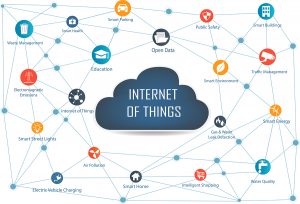 One area getting bipartisan support in Congress is the oversight of federal spending on travel. Two recently introduced bills look to curb ethics violations in terms of travel spending.
One area getting bipartisan support in Congress is the oversight of federal spending on travel. Two recently introduced bills look to curb ethics violations in terms of travel spending.
It's been over seven years since Congress looked this closely at federal travel following the excessive costs associated with a GSA conference in Las Vegas. This renewed look is in response to the high profile travel scandals of senior administration officials including Interior Department Secretary Ryan Zinke, former Veterans Affairs Department Secretary David Shulkin, and former Environmental Protection Agency Administrator, Scott Pruitt.
The 2019 Taxpayers Don't Incur Meaningless Expenses (Taxpayers DIME) Act would require federal agencies to report to Congress each quarter on the travel of any senior official on government aircraft. Bill sponsor, Rep. Tom O'Halleran said, "We must hold our government leaders to the highest standards, and with so many high-profile ethics violations in the past years, it is clear we have failed to do that. No matter who controls Congress or the White House, we have to hold everyone accountable."
Another bill looks beyond senior officials, ensuring that all federal employees traveling are spending taxpayer dollars at facilities that have proven to have ethical practices. It specifically encourages employees to stay in hotels that have taken action to reduce human trafficking on their premises. To do this, GSA would create a list of hotels that have taken proven steps to train their workforce to recognize and report human trafficking.
So what does this mean for event planners and attendees?
When planning events, keep in mind that government attendees will have to abide by these rules and keep the locations easily accessible by commercial travel options. Look at policies of hotels and venues around how they educate staff on human trafficking (and other social issues) and choose those that have defined plans and programs in place. For attendees, it's more important than ever to fully investigate and vet travel plans and expenses to ensure that there are no violations, or even perceived violations, of ethical standards.
Let us know your thoughts on this pending legislation and how you ensure compliance with federal travel regulations. Leave your thoughts in the comments.




 The Internet of Things, or IoT, is a system of interrelated devices that may have completely different uses, shapes, or sizes, but all have one thing in common-- data and the ability to transfer it autonomously. IoT can be the microchip that helps you find your lost dog, a monitor in a heart valve that alerts doctors and patients to irregular beats, a thermostat that you can turn on remotely, motion detectors that tell you when someone is approaching your door, and so much more. Building on these everyday applications, state, local, and federal agencies are finding ways to use IoT to better serve citizens.[Tweet "IoT was named one of the top subjects discussed at federally-focused events. #GovEventsBlog"]
The Internet of Things, or IoT, is a system of interrelated devices that may have completely different uses, shapes, or sizes, but all have one thing in common-- data and the ability to transfer it autonomously. IoT can be the microchip that helps you find your lost dog, a monitor in a heart valve that alerts doctors and patients to irregular beats, a thermostat that you can turn on remotely, motion detectors that tell you when someone is approaching your door, and so much more. Building on these everyday applications, state, local, and federal agencies are finding ways to use IoT to better serve citizens.[Tweet "IoT was named one of the top subjects discussed at federally-focused events. #GovEventsBlog"]
